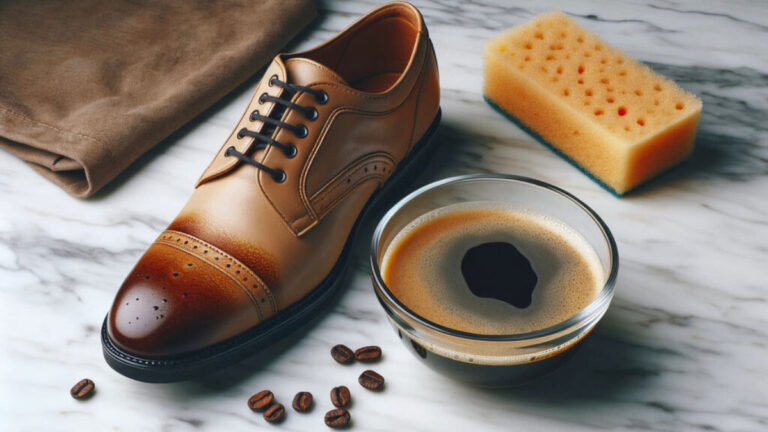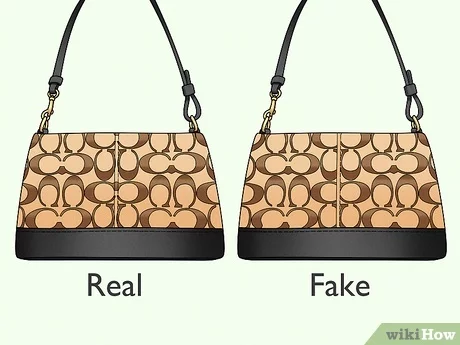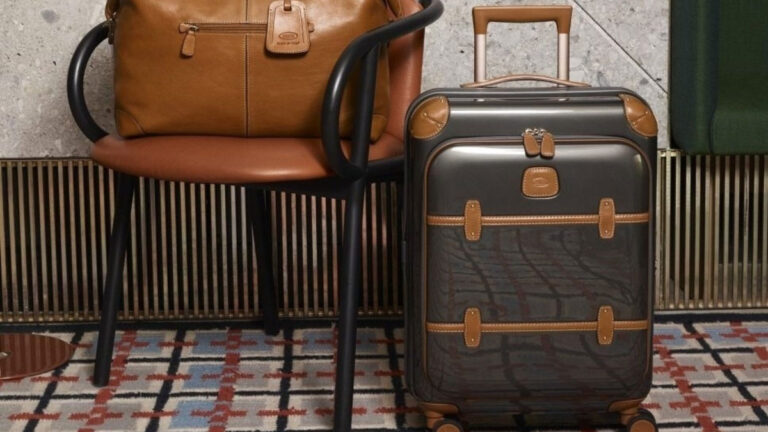Say Goodbye to Unpleasant Odors: How to Remove Urine Smell from Leather Couch
Removing Urine Smell from Leather
When it comes to removing urine smell from a leather couch, the process involves specific challenges and precautions. Leather, being a natural material, requires delicate handling to maintain its quality and longevity.
Challenges in Cleaning Leather
Cleaning leather can be quite challenging due to its natural properties. Leather has a tendency to attract bacteria and develop unpleasant odors over time. This makes it more difficult to clean compared to synthetic fibers. The challenges include:
- Sensitivity to moisture: Excessive moisture can damage leather, causing it to become brittle or discolored.
- Longer absorption time: Leather absorbs liquids slowly, and any solution applied needs time to effectively penetrate and neutralize odors.
- Risk of damage: Using the wrong cleaning products or techniques can damage the leather’s surface or its underlying structure.
Given these challenges, it’s important to use the right methods and tools to clean your leather couch effectively and safely.
Avoiding Washing Machine Mishaps
Throwing your leather couch covers or any leather items into a washing machine is not recommended. Washing machines can cause significant damage to leather, including shrinkage, discoloration, and degradation of texture. Instead, follow these guidelines for safe cleaning:
- Hand cleaning: Use a mix of lukewarm water and white vinegar, or a mild soap specially made for leather.
- Use leather conditioners: After cleaning, applying a leather conditioner can help restore moisture and maintain the leather’s suppleness.
| Cleaning Method | Outcome |
|---|---|
| Washing Machine | High risk of damage (shrinkage, discoloration) |
| Hand Cleaning | Safer, controlled cleaning |
| Professional Cleaning | Effective but can be expensive |
For more information on cleaning specific leather items and avoiding common mishaps, you can explore our articles on how to wash leather jacket, how to wash leather bag, and how to wash leather couch.
By understanding the challenges and proper methods, you can effectively remove urine smell from your leather couch while preserving its quality and appearance. Proper maintenance and regular conditioning are key to preventing future odors and maintaining your leather furniture’s longevity. For ongoing care tips, check out our guide on how to remove smell from leather sofa.
DIY Solutions for Odor Removal
When faced with the challenge of getting rid of urine odor from your leather couch, there are several DIY solutions you can turn to. These methods are simple, effective, and utilize common household items.
Using Water and White Vinegar
A highly recommended method for neutralizing odors, particularly urine, is a mixture of water and white vinegar. The acid in the vinegar helps break down and neutralize the smell. To prepare and use this solution effectively, follow these steps:
- Mix one part water with one part white vinegar in a spray bottle.
- Lightly spray the affected area. Be cautious not to soak the leather.
- Let the solution sit for about 5-10 minutes.
- Wipe the area with a clean, damp cloth to remove residual vinegar.
- Dry the area completely with a soft towel to avoid any water stains.
For persistent odors, you might need to repeat the process. Baking soda can also be an effective follow-up by sprinkling some onto the area and letting it sit overnight before vacuuming.
Mild Soap and Leather Conditioner
Using mild soap along with a leather conditioner can also be an effective DIY solution. This method not only helps in cleaning but also conditions the leather to maintain its softness and shine.
Steps to follow:
- Add a few drops of mild soap to a bowl of warm water.
- Dampen a soft cloth with the soapy water – ensure that the cloth is not too wet.
- Gently wipe the affected area with the cloth.
- Follow up with a second clean, damp cloth to remove any soapy residue.
- Let the leather air-dry completely.
Once dry, apply a leather conditioner to keep the leather soft and nourished. This helps prevent cracking and maintains the durability of your leather couch.
| Method | Ingredients | Steps |
|---|---|---|
| Water and White Vinegar | Water, White Vinegar | Mix 1:1 ratio, spray lightly, wipe with damp cloth, dry with a towel |
| Mild Soap and Leather Conditioner | Mild soap, Water, Leather Conditioner | Mix soap and water, wipe with damp cloth, dry, apply conditioner |
By using these DIY methods, not only do you effectively remove the unpleasant urine smell, but you also take steps to preserve the integrity and beauty of your leather couch.
For more information on leather care and odor removal, you might find these articles helpful:
- How to remove smell from leather bag
- How to remove smell from leather sofa
- How to get water stains out of leather
- Why does leather crack and peel
Store-Bought Remedies for Odor
When it comes to tackling the problem of removing the urine smell from your leather couch, store-bought remedies offer a wide array of solutions that can be more effective and convenient than DIY methods.
Benefits of Leather Cleaners
Leather cleaners are specially formulated to address the unique needs of leather materials, making them highly effective for eliminating odors and ensuring lasting cleanliness.
One of the main advantages of using these products is that they come with clear and specific instructions for use, ensuring that you can address the smell without damaging the leather. High-quality leather cleaners often include ingredients that not only clean but also condition the leather, helping to maintain its softness and strength.
Benefits of using leather cleaners:
- Ease of use: Clear instructions aid in correct application.
- Specialized formulation: Designed to tackle smells and maintain leather quality.
- Dual-purpose: Clean and condition for long-term care.
To ensure complete odor removal and maintain the quality of the leather, be sure to choose well-recommended products. For more advanced odor issues, you might find mold prevention and elimination methods particularly useful.
Mold Prevention and Elimination
Mold can be a significant issue in leather, as it is a natural material that can attract bacteria and fungi, leading to unpleasant odors. Mold prevention and elimination products are essential for maintaining a fresh-smelling leather couch.
These specialized products generally contain antifungal agents that neutralize mold spores and prevent new growth. Using these products promptly after detecting any signs of mold or musty smells can save the integrity of your leather items.
For effective mold prevention and elimination:
- Use antifungal sprays: Products designed to kill mold spores.
- Regular cleaning: Regular maintenance with appropriate cleaners.
- Proper ventilation: Ensure good airflow to prevent mold growth.
| Product Type | Main Benefits |
|---|---|
| Leather Cleaners | Effective odor removal, conditions leather |
| Mold Prevention Products | Neutralizes mold, prevents new growth |
| Antifungal Sprays | Kills spores, maintains freshness |
By using these store-bought remedies, you can ensure that your leather couch remains odor-free and in great condition. For those interested in other aspects of leather care, check out our guides on how to remove smell from leather sofa and how to remove smoke smell from leather couch.
For persistent odor issues, you might consider professional cleaning services, which can offer tailored solutions and stain treatments for deeply embedded smells.
Cleaning Leather Couch from Dog Urine
Dealing with dog urine on a leather couch requires prompt action to prevent permanent damage and lingering odors. Below are some methods to tackle this issue effectively.
Quick Response to Urine Stains
When a dog urinates on your leather couch, it’s crucial to act quickly. The longer the urine sits, the harder it becomes to remove without causing harm (Couch Design). Follow these steps for immediate action:
- Blot the Area: Use a clean cloth or paper towel to blot the urine. Avoid rubbing, as it can push the urine deeper into the leather.
- Prepare the Solution: Mix a solution of mild soap made for leather and water. Avoid using harsh detergents or products not specifically designed for leather.
- Clean the Surface: Gently clean the affected area with the soapy solution using a soft cloth. Be thorough but gentle to prevent further damage.
- Dry the Area: Use a dry cloth to remove any excess moisture. Let the area air dry completely.
| Action | Description |
|---|---|
| Blotting | Use a clean cloth to blot the urine, avoid rubbing. |
| Cleaning Solution | Mix mild leather-specific soap with water. |
| Surface Cleaning | Gently clean the area with a soft cloth dipped in the solution. |
| Drying | Use a dry cloth to blot excess moisture and let air dry. |
Neutralizing Odors with Water and Vinegar
Neutralizing the odor from dog urine is as important as removing the stain. A mixture of water and white vinegar is effective in breaking down the bacteria and uric salts that cause the smell.
- Make the Solution: Mix one part white vinegar with three parts water.
- Spray the Area: Lightly spray the solution onto the affected area. Do not saturate the leather as excessive moisture can damage it.
- Blot Dry: Use a clean cloth to blot the area after spraying.
- Air Dry: Allow the area to air dry completely.
| Solution Component | Ratio |
|---|---|
| Water | 3 |
| White Vinegar | 1 |
In addition, baking soda can also be used to neutralize odors. Sprinkle it over the affected area and leave it overnight. The next day, vacuum up the baking soda. For more stubborn odors, enzymatic cleaners are recommended as they break down uric salts effectively and neutralize the odor.
To maintain a fresh-smelling, clean leather couch, regular cleaning and conditioning are essential. For more tips on maintaining leather items, you can explore our articles on how to remove smell from leather bags and how to remove smell from leather sofa. Additionally, using leather conditioners recommended by manufacturers can help maintain the quality of your leather furniture and prevent future accidents.
Preventing Future Accidents
When it comes to maintaining the pristine condition of your leather couch, prevention is key. Proper care and using protective measures can go a long way in preventing accidents and ensuring your leather furniture remains free from unpleasant odors. Here are some strategies to consider.
Covering During Training
During potty training or when you are not around, covering your leather couch can prevent any accidents from reaching the leather surface. Using plastic covers or furniture covers is a practical solution to protect against urine stains and odors (Couch Design).
| Scenario | Recommended Covering |
|---|---|
| Potty Training a Pet | Plastic or waterproof covers |
| Leaving Pets Alone | Furniture covers or throws |
By keeping the couch covered, you reduce the risk of leaving permanent stains or odors that might be difficult to remove later. For more tips on protecting leather furniture, visit our guide on how to protect leather couches.
Regular Conditioning and Protection
Regular conditioning and protection are essential for maintaining the beauty and durability of your leather couch. Conditioning helps preserve the leather’s natural oils, keeping it soft and preventing it from cracking. Using products specifically designed for leather furniture can maintain the softness, shine, and overall look of the leather (Couch Design).
Here is a simple conditioning routine:
- Clean the Leather: Use a mild soap and water solution or a leather cleaner to remove dirt and grime.
- Apply Leather Conditioner: Use a clean, soft cloth to apply the leather conditioner evenly across the surface.
- Buff the Leather: After allowing the conditioner to absorb, gently buff the leather with a dry cloth to restore its shine.
| Step | Frequency |
|---|---|
| Cleaning | Monthly or as needed |
| Conditioning | Every 3-6 months |
| Buffing | After each conditioning session |
For more detailed information on leather care, see our article on how to condition leather furniture.
Implementing these preventive measures will not only protect your leather couch from accidental damage but also ensure it remains a beautiful and lasting piece of your interior decor. For more advice and solutions on leather care, check out our related articles:
- how to remove smell from leather sofa
- how to soften hard leather couch
- how to get scratches out of leather couch
- how to get stains out of leather
Leather Tanneries’ Odor Control
Modern Tanning Methods
Modern tanning methods have significantly evolved, eliminating the traditional use of urine and dog feces, which were once known to generate unpleasant odors during the leather tanning process (One4Leather). Instead, contemporary tanneries use various chemicals and other agents, focusing on managing processes and chemistry to minimize any odorous by-products.
Proper storage of hides is crucial to preventing decomposing smells. European tanneries ensure that hides are fresh and healthy, maintaining high-quality leather and avoiding foul odors (One4Leather). Furthermore, the ‘new leather’ smell often associated with leather goods results from certain tannins and oils used during conditioning. To reduce this odor, tanneries employ water-based chemical solutions, degassing processes, and thorough cleaning methods (One4Leather).
Environmental Impact of Tannery Emissions
The operations within tanneries can emit various gases such as NO2, SO2, and H2S. Careful management of these emissions is essential to protect the health of workers as well as the surrounding environment. European Leather Industry initiatives have successfully reduced volatile organic compounds (VOCs) in leather production, thus lowering pollutant levels (One4Leather).
| Pollutant Type | Abatement Method | Reduction Impact |
|---|---|---|
| NO2 (Nitrogen Dioxide) | Air Filtration | Significant reduction in air pollution |
| SO2 (Sulfur Dioxide) | Statutory Controls | Decreased release of harmful gases |
| H2S (Hydrogen Sulfide) | Wastewater Filtration | Improved air quality |
European tanneries implement advanced air filtration systems and statutory controls that effectively restrict odorous emissions such as H2S, SOx, and NOx (One4Leather). Innovations in tannery processes and wastewater treatment technologies further contribute to creating an odour-free and eco-friendly future for the leather industry. For more information on leather care, consider checking out topics such as how to remove smell from leather sofa and how to remove smell from leather bag.







